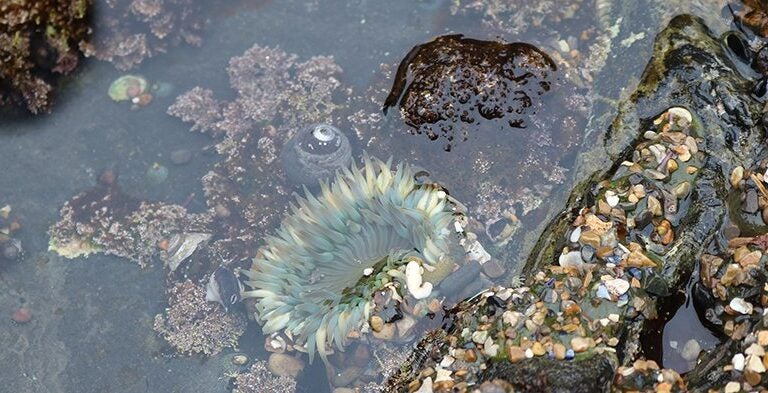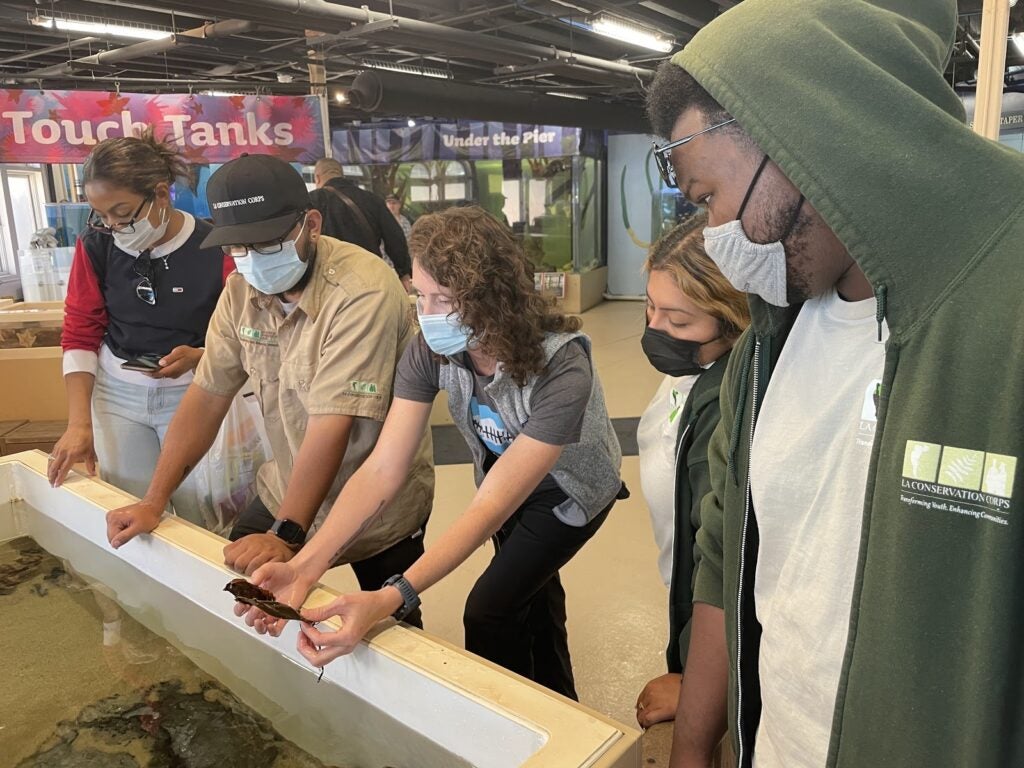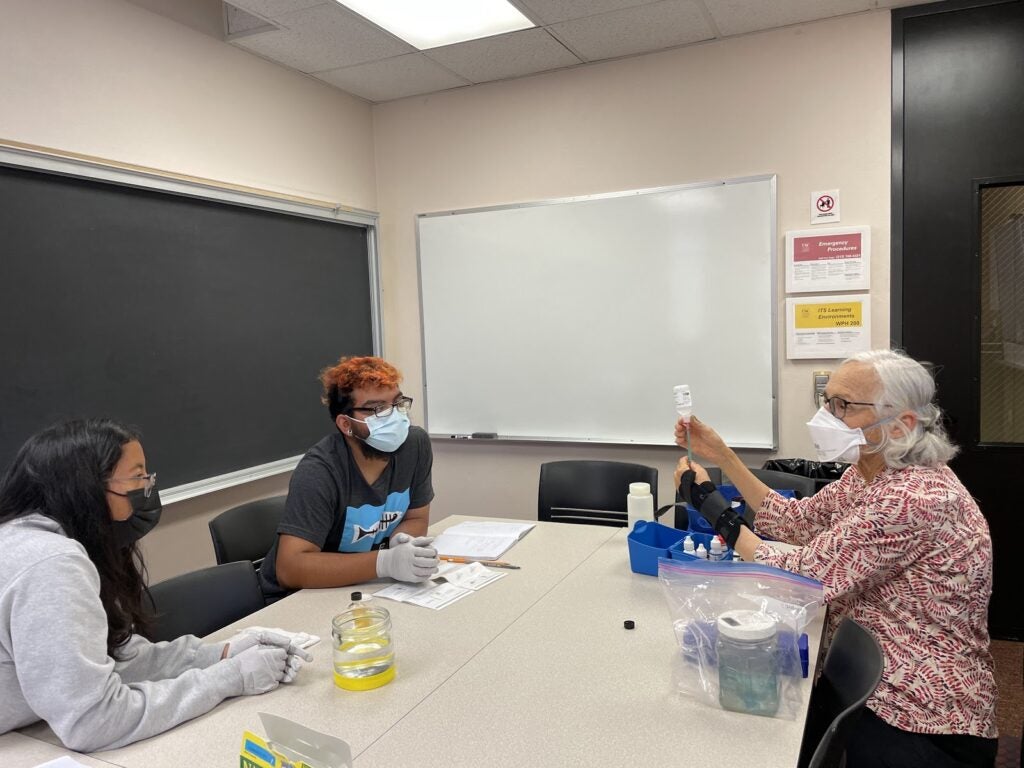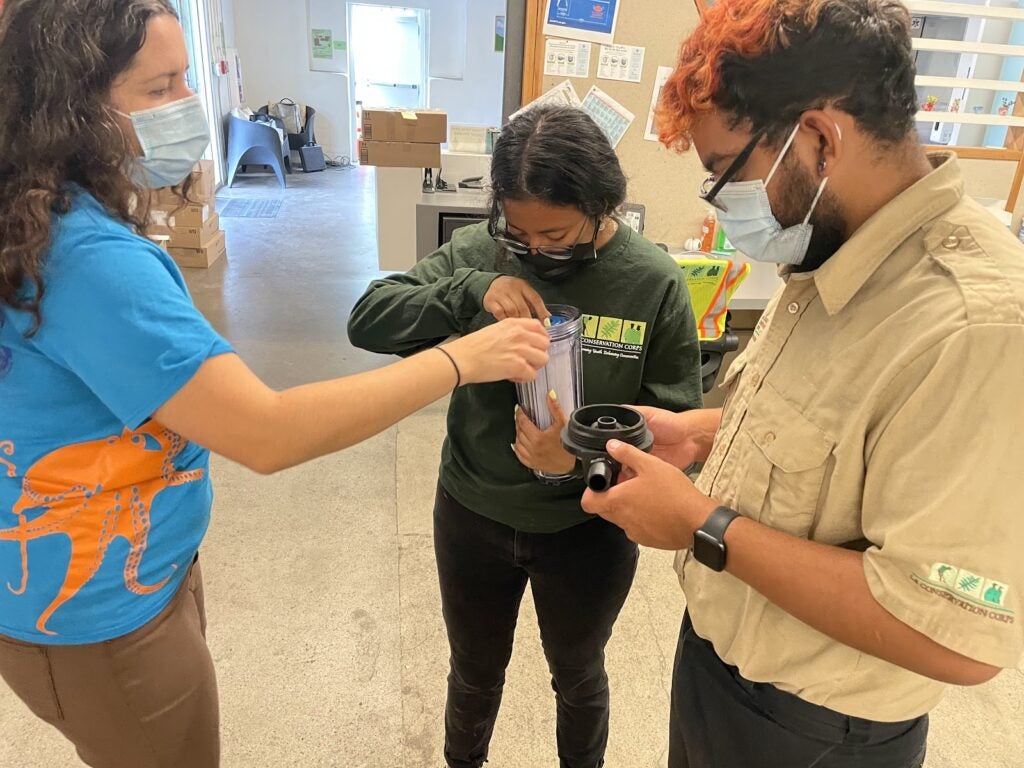
Traveling Tidepools: Supporting Workforce Training Through a Unique Partnership
“Reimagining the STEM Workforce Development As A Braided River,” an article featured in the American Geophysical Union’s Eos science news magazine, calls for a change in the traditional linear “pipeline” approach for workforce development where there is often only one entryway into a career path. Instead, the article promotes adaptability of student lifestyles, allowing for multiple entry points and various opportunities for engaging diverse audiences outside the STEM workforce’s traditional academic setting. This approach is one that USC Sea Grant’s education program is very well versed in and has implemented for many years. Our program’s work is accomplished by building partnerships with community organizations that have similar goals of building an environmentally literate workforce. One example of this work is the recently completed 2022 summer pilot program with the Los Angeles Conservation Corps (LA Corps) workforce training program, Young Adult Corps. USC Sea Grant partnered with LA Corps, Heal the Bay Aquarium, and the USC Viterbi K-12 STEM Center to provide workforce training for young adults. The partners aimed to provide aquarist training and enhance teaching skills through facilitating presentation opportunities at various LA Unified School District (LAUSD) summer school sites managed by the LA Corps’ After School Program.
Executing pilot projects often requires strategic planning, and USC Sea Grant and partners seamlessly curated ideas that led to a successful program this summer. The team of partners was tasked at the beginning of the program with recruiting interested corpsmembers to train the students. Visiting the Heal the Bay Aquarium and meeting with the Associate Aquarium Director of Operations, Laura Rink, was one of the crucial initial recruitment steps that helped corpsmembers understand what the training program would involve and what skills they would gain.

After interviewing seven corpsmembers, Angelica Gutierrez and Derrick Vasquez, two corpsmembers interested in animal knowledge and husbandry skills, were selected to participate in the six-month paid pilot project. For Derrick, the LA Corps workforce program was an avenue through which he could pursue his goal of attending college to study animals. With a background of experiences in earth science and after an unfortunate halt to his original studies, he joined the LA Corps in hopes that they could contribute to the support he was seeking. As the LA Conservation Corps’ mission is to provide corpsmembers opportunities to enter the workforce and become better equipped and prepared to meet future challenges, this summer’s pilot program provided just that.
USC Sea Grant’s education team administered the training to get both corpsmembers familiar with the local marine life they would be working with and to gain an understanding of the other important parameters, such as water quality, required for working with live marine animals. This training was complemented with hands-on training led by Ms. Rink, where they learned feeding protocols and filtration and pump maintenance techniques. The two corpsmembers also strengthened their public speaking skills through training sessions and direct interaction with aquarium guests.

Following the training of the two corpsmembers, the next primary task of the partnership was to remedy the materials needed to assist the corpsmembers in teaching about aquatics and marine animals, including installing a life support system consisting of a chiller, filter, and pump. This task consisted of revamping an abandoned trailer into an operational touch tank to transport and house marine animals so that it could be used to visit students throughout the summer. The effort of making the trailer functional was made possible through the help of Jennifer Kolbauer, Assistant Director of the USC Viterbi K-12 STEM Center, along with USC Sea Grant’s Education Specialist Maria Madrigal, and Ms. Rink.

With the success of recruiting and training two corpsmembers and creating a functional mobile learning touch tank for students, the pilot project was in full gear to implement the “Traveling Tidepool.” Over the summer of 2022, Derrick and Angelica visited ten LAUSD schools across underserved communities within the greater Los Angeles region, reaching over 300 students. They provided in-person, hands-on experiences with marine animals to summer school students from similar backgrounds as theirs, providing opportunities for those students to see themselves in similar roles. Derrick expressed how fun it has been teaching people all about the animals and shared he has “the hope that I’m making a big impact on them to care for sea life.” While his first attempt at college may have been thwarted, thanks to this pilot program, he now hopes to enroll at California State University, LA, in 2023 and continue his studies as a biology major.

In addition to successfully inspiring young adults within the Corp’s workforce training program and facilitating an outstanding partnership, this summer’s pilot program resulted in positive outcomes across the ten schools. Deana Porras, Senior Program Manager, and Da’Lana Walker, Senior Program Director of the Corps’ After School Program, were pleased with the summer experience and expressed that they will continue to support the program. Further, Derrick and Angelica will continue their teaching this Fall by visiting the ten elementary schools served by the LA Corps’ After School Program, in addition to visiting six new schools that are part of USC Viterbi’s K-12 STEM Center’s Mission Science program. This unique partnership would not be possible without the financial support, investment of resources, and staff support from the LA Corps, including the coordination provided by Adrianne Calbreath, LA Corp’s Administrative Services Manager. USC Sea Grant is proud to partner with the Los Angeles Conservation Corps, Heal the Bay, and USC Viterbi K-12 STEM Center in our efforts to provide multiple access points to careers and training so that we may have a diverse, environmentally literate, and skilled workforce.